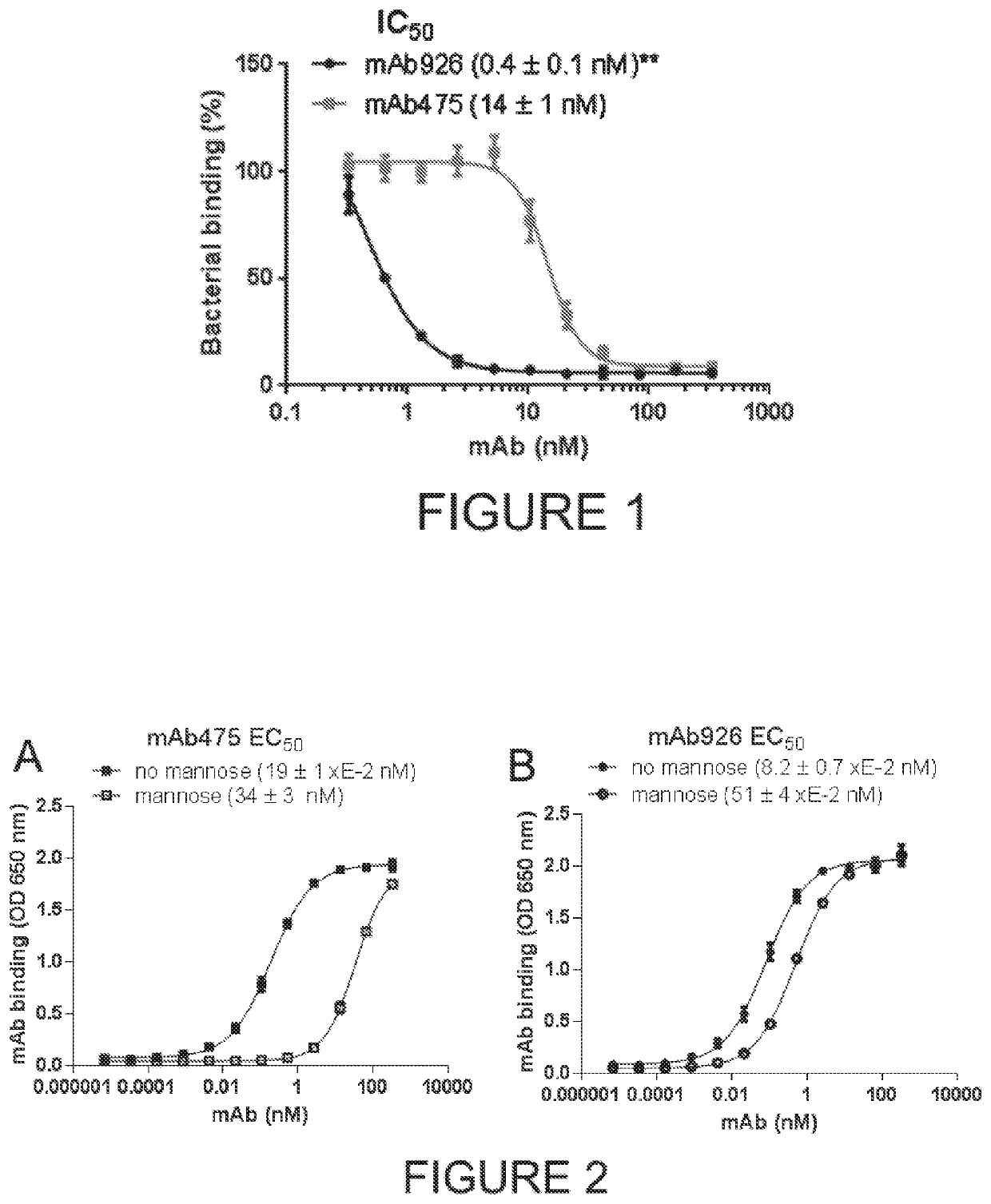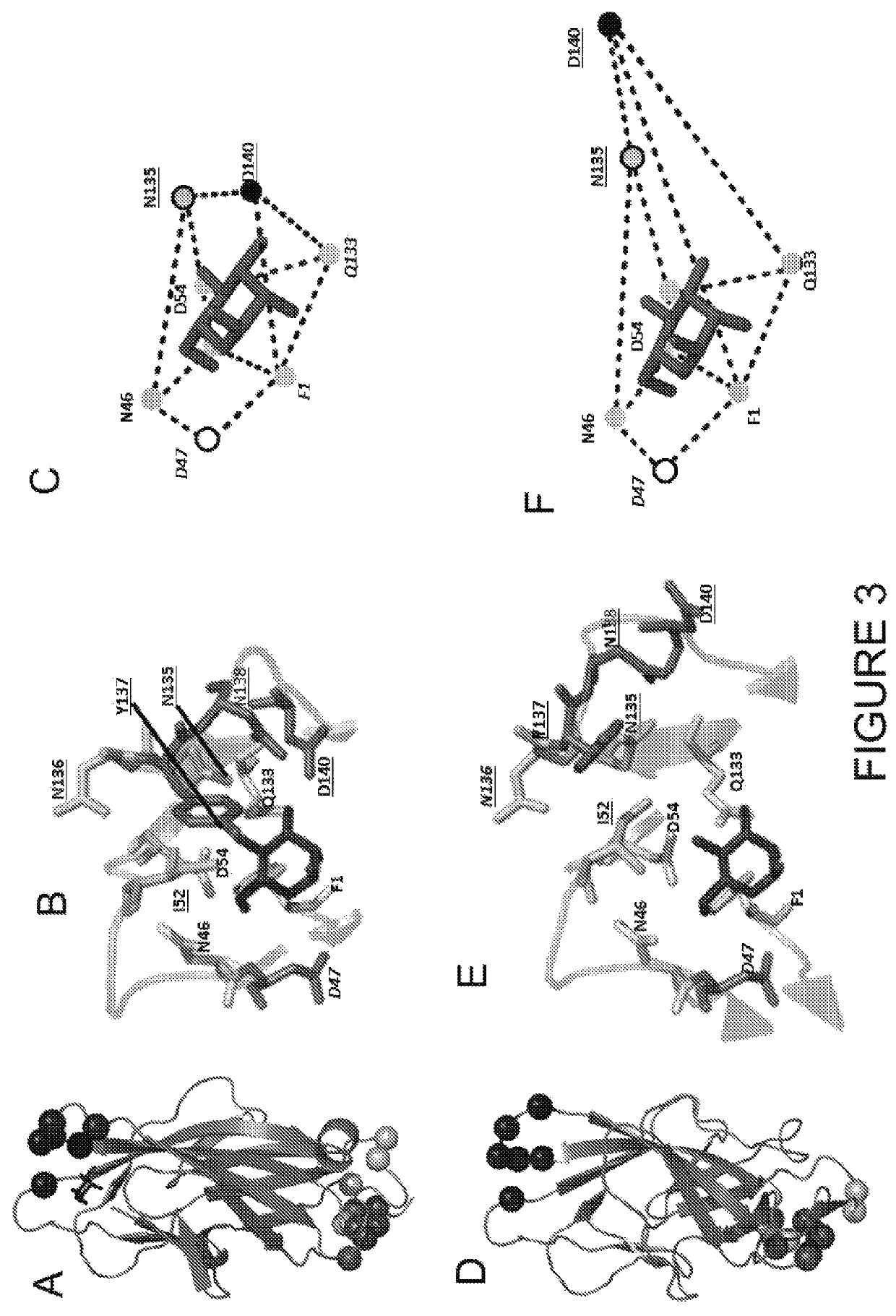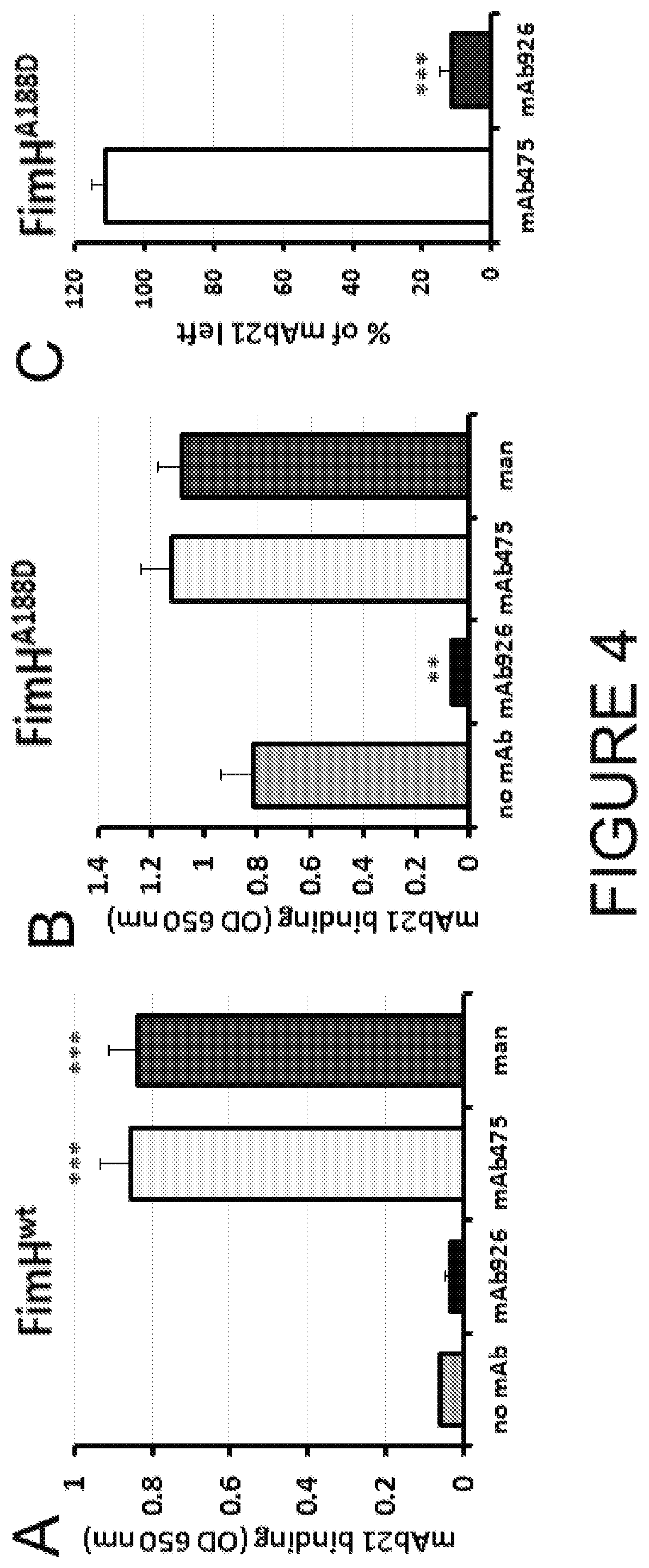Compositions and methods for treatment and prevention of uropathogenic E. coli infection
a technology of uropathogenic bacteria and compositions, which is applied in the field of compositions and methods for treating and preventing uropathogenic bacteria i > e. coli /i > infection, can solve the problems of century-old static ‘lock-and-key’ interaction mechanism that is considered too rigid for many, the majority of receptor proteins and enzymes, and achieves the effect of inhibiting or preventing cell infection
- Summary
- Abstract
- Description
- Claims
- Application Information
AI Technical Summary
Benefits of technology
Problems solved by technology
Method used
Image
Examples
example 1
Antibodies mAb926 and mAb475 Inhibit Bacterial Adhesion with Different Efficiencies and Mechanisms
[0083]This example describes in greater detail the activity of anti-FimH inhibitory antibodies raised against the lectin domain of FimH in the inactive conformation characterized in a previous study that described the mAb475 antibody that directly competes with mannose binding (Kisiela, et al. 2013). Using IMGT / V-Quest software (Brochet, et al. 2008; Giudicelli, et al. 2011) we now have compared the germline origins of mAb475 and several other FimH-inhibiting monoclonal antibodies. One of the antibodies, mAb926, was of a different germline origin from mAb475, with the amino acid sequence homology of the VL- and VH regions being only 56% and 71%, respectively, and all three complementarity-determining regions being highly diverse (FIG. 13). We therefore compared the abilities of mAb926 and mAb475 to inhibit FimH in greater detail.
[0084]Type 1 fimbriated bacterial cells expressing the wil...
example 2
irectly Competes with mAb475 but not mAb926 Binding
[0087]This Example compares the ability of mAb475 and mAb926 to bind FimH in the presence of soluble mannose. As shown in FIG. 2A, mannose strongly inhibited mAb475 binding, causing a significant shift of its binding curve towards higher concentrations of the antibody. The mAb475 half-maximal effective concentration (EC50) increased 179-fold in the presence of soluble mannose. In contrast, binding of mAb926 was affected by mannose to a much lesser extent resulting in a relatively small rightward shift of the binding curve with a 6.2-fold increase in the mAb926 EC50 (FIG. 2B).
[0088]To distinguish between competitive versus non-competitive interactions of mannose and the antibodies, we compared the observed EC50 ratio values for antibody binding with an EC50 ratio for a model of two ligands binding to a receptor (Ehlert 1988). Based on the model, mannose and antibody can compete for binding to the same site on FimH according to their ...
example 3
6 Epitope Shifts Away from Mannose-Interacting Residues in the Inactive FimH
[0097]While the overlap of mAb926 epitope with the mannose-binding residues in the active FimH explains the inhibitory potential of the antibody, it does not explain the non-competitive nature of the mAb926 inhibition. Thus, we turned to the alternative FimH structure (3JWN), where the lectin domain assumed a more twisted conformation and interacts with the pilin domain (FIG. 3D). This structure was obtained in the absence of mannose ligand and its binding pocket is in an open, low-affinity (i.e. inactive) conformation.
[0098]As the inactive FimH structure was obtained in the absence of ligand, we first determined the potential position for mannose in the open configuration of binding pocket.
[0099]Mannose was docked into the pocket of the 3JWN crystal structure using coordinates present in the active 1UWF structure followed by energy minimization using the CHARMM and the PARAM22 force field. As shown in Table...
PUM
| Property | Measurement | Unit |
|---|---|---|
| concentrations | aaaaa | aaaaa |
| concentrations | aaaaa | aaaaa |
| pH | aaaaa | aaaaa |
Abstract
Description
Claims
Application Information
 Login to View More
Login to View More - R&D
- Intellectual Property
- Life Sciences
- Materials
- Tech Scout
- Unparalleled Data Quality
- Higher Quality Content
- 60% Fewer Hallucinations
Browse by: Latest US Patents, China's latest patents, Technical Efficacy Thesaurus, Application Domain, Technology Topic, Popular Technical Reports.
© 2025 PatSnap. All rights reserved.Legal|Privacy policy|Modern Slavery Act Transparency Statement|Sitemap|About US| Contact US: help@patsnap.com



